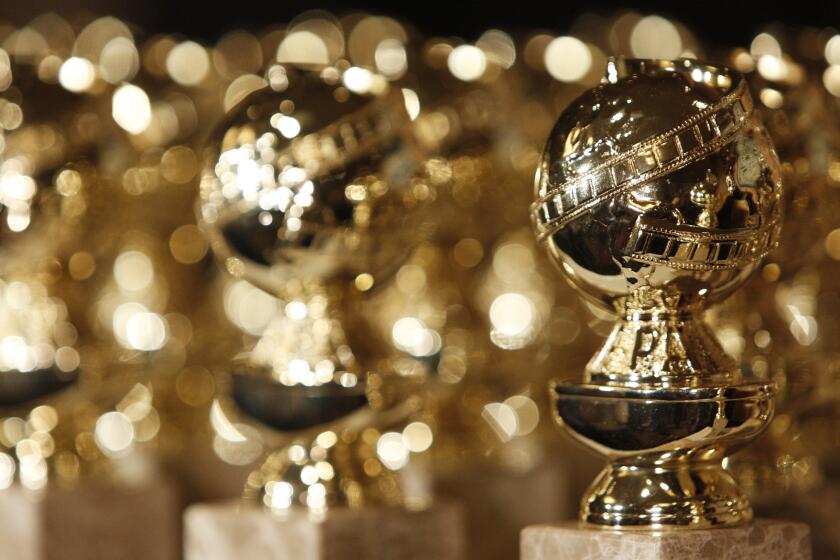Gil Shaham is drawn to works from the 1930s
Unless you happen to be David Letterman, little of value tends to come from making top 10 lists. But violinist Gil Shaham has lately turned this common time-waster into something of a consuming passion, and music lovers are the beneficiaries.
One of the era’s star fiddlers, Shaham began musing about his favorite 20th century violin concertos at the turn of the millennium. He found to his surprise that most were written in the 1930s. This led to a decision to devote several seasons almost exclusively to these works, specifically concertos by Igor Stravinsky, Béla Bartók, Alban Berg, Sergei Prokofiev, William Walton, Benjamin Britten, Samuel Barber and Paul Hindemith. “They’re all composed between 1931 and 1939,” Shaham said of the scores, speaking by phone late one night from his home in Manhattan, just before leaving for London to perform one of them, Berg’s Concerto, with Michael Tilson Thomas. “It’s a pretty astonishing list, almost like a music-101 of composers. And though I’m hoping this project might lead to some interesting conversations, I started thinking of it purely selfishly, because these are pieces I love and want to play.”
Shaham, 38, is also scheduled to perform the Berg Concerto this week with Gustavo Dudamel and the Los Angeles Philharmonic at Walt Disney Concert Hall. The aching, 12-tone work, dedicated to “the memory of an angel,” is a lament on the death of 18-year-old Manon Gropius, daughter of Bauhaus architect Walter Gropius and Alma Mahler.
But the violinist, who holds Israeli and American citizenship, perceives additional associations here. “There is something about this concerto beyond its being sort of a requiem,” he said. “It captures Vienna in the 1930s. When you hear that famous passage where the Bach chorale is first set, with the clarinets imitating an organ, and then there’s the weeping violin over serialist harmony, you feel Old Europe is lost.”
He finds similar connections in other concertos from this period, comparing movements in Barber’s to the erection of American skyscrapers and the plight of Dust Bowl farmers. And after noting the originality of placing traditional Hungarian folk elements within a modern rhythmic setting, he calls Bartók’s Second Violin Concerto “the story of all the refugees of the time.”
Though it’s early days for this project, Shaham is thus far sticking to scores he knows well, confining himself this season to Stravinsky, Berg, Barber, Prokofiev and Walton. “I’m a slow learner,” he said. “But next season, I’ll add the Britten, then I’ll do Hindemith. And if we end up going to a fourth season, there’s Karl Amadeus Hartmann’s ‘Concerto Funebre,’ which is amazing. We might also add the Korngold, even though he published it in 1945, because the movie themes it’s based on were written in the 1930s.”
‘He has all the tools’
Those unfamiliar with Shaham’s career may think his commitment to performing these concertos reveals an artist with a decidedly modernist bent. But he is even more associated with music of the 19th century, a golden era for the violin. His latest CD, released on his own Canary Classics label, is devoted to showpieces by Spanish violin virtuoso Pablo de Sarasate. And his most recent appearance in Los Angeles, at the Hollywood Bowl in July, found him performing Beethoven’s Violin Concerto, a cornerstone of his repertory.
Marin Alsop conducted that concert, and she lauds his “passionate and committed” playing as well as his collaborative spirit, sense of humor and sunny disposition. “I think he’s in music for all the right reasons, because he adores it,” she said. “That’s his motivation -- the repertoire, the composer, the experience.”
Shaham is less involved with new music than other leading violinists -- like Anne-Sophie Mutter, Gidon Kremer and Leila Josefowicz -- but he has forged ties with composers William Bolcom and John Williams. His relationship with Williams is especially noteworthy, because the composer wrote the concerto-like “TreeSong” (2000) for him. Shaham was also the first to perform Williams’ late-1990s revision of his Violin Concerto (1976) and was the dedicatee of “Devil’s Dance,” an encore piece based on themes from the composer’s score to the movie “The Witches of Eastwick.” Next season, Shaham plans to perform Williams’ “Duo Concertante” for violin and viola -- among the few works that fall outside his ‘30s concerto scheme.
The esteem is mutual, for Shaham has no bigger champion than this composer-conductor. “When I think about Gil,” Williams said, “I think of a gentle, giving and humble man with a gargantuan talent. In listening to him, there is the sense that the brilliance is coming from the music and that we can apprehend its intention unobstructed by vanity, though Gil is capable of a broad range of emotional qualities, from gently persuasive to forceful. The other thing is that he has all the tools, including fantastic rhythmic flow and beautiful intonation.”
Perhaps that explains why Shaham remains perpetually in demand on the world’s foremost stages despite his insistence on performing only about 50 concerts annually. The reason: to spend more time with his wife, violinist Adele Anthony, and their two young children. And there has even been an unintended benefit to this limiting of public appearances.
“Adele and I have both noticed the same thing,” Shaham said. “We enjoy our music even more now because it’s really our thing. In a way, we’re enjoying it more by doing it less.”
Fortune has continued to favor Los Angeles as far as Shaham’s concert dates go. In addition to his four performances with Dudamel and the Philharmonic, the violinist returns to Disney Hall in April, performing Stravinsky’s concerto with the touring Saint Louis Symphony Orchestra and David Robertson, the ensemble’s music director and Shaham’s brother-in-law.
As a relation, Robertson may not be the most objective judge of Shaham’s talents, but they worked together long before any familial connection -- indeed, Shaham was merely 16 at their first collaboration, in Jerusalem. Since then, Robertson’s esteem for him has only grown.
“He has a perfect ear for sound and an ability to express the love and joy he feels in music,” the conductor said. “Sometimes he will play so that the harmonics of his instrument just envelop you. It’s so exciting to stand next to him when he’s playing the Beethoven Concerto and hear him in the final cadenza. It’s wild and pure and so loud -- and all perfectly in tune.”
More to Read
The biggest entertainment stories
Get our big stories about Hollywood, film, television, music, arts, culture and more right in your inbox as soon as they publish.
You may occasionally receive promotional content from the Los Angeles Times.










